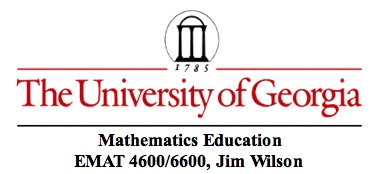
Triangle Mid-Segment Theorem

Take any triangle ABC. Find the mid-point D of AB and the mid-point E or AC.
Click here to open a GSP file. Explore with measures of DE and BC as any vertex is moved.
One of the most useful theorems in geometry of plane triangles is the Triangle Mid-Segment Theorem:
In any triangle, a segment joining the midpoints of any two sides will be parallel to the third side and half its length.
Prove the Triangle Mid-Segment Theorem.
If the figure above, we are given that D is the mid-point of AB and E is the mid-point of AC. So we know that AD = DB and AE = EC. In such situations it is often useful to draw some auxiliary figures and try to find congruent figures.
Hint. An auxiliary figure. This is one suggestion. There are others that are equally productive and perhaps lead to more elegant proofs. In the MATH 7200 Geometry, one item in the problem set is to find alternative proofs. (Geometry, Section 1.3)
Extension.
State and extend or adapt the theorem to trapezoids and parallelograms.
Discussion
In the sequence of development of Geometric from a small set of premises, the usual sequence is to development the concepts of congrunce and parallelity and the theorems associated with these. The Midsegment theorem is usually in this set and that is the context here. Similarity is usually developed afterwards and depends on the ideas associated with the midsegment theorem.
If an alternative development of Geometry is used and the tools of similarity are available before the midsegment theorem, then the proof is trivial, following immediately from establishing that the triangle AMN is similar to triange ABC.
Many curriculum people are interpreting the CCSS mathematics standards to promote such an alternative development.
Prove the Triangle Midsegment Theorem using Coordinate Geometry
(As is suggested in the Common Core)